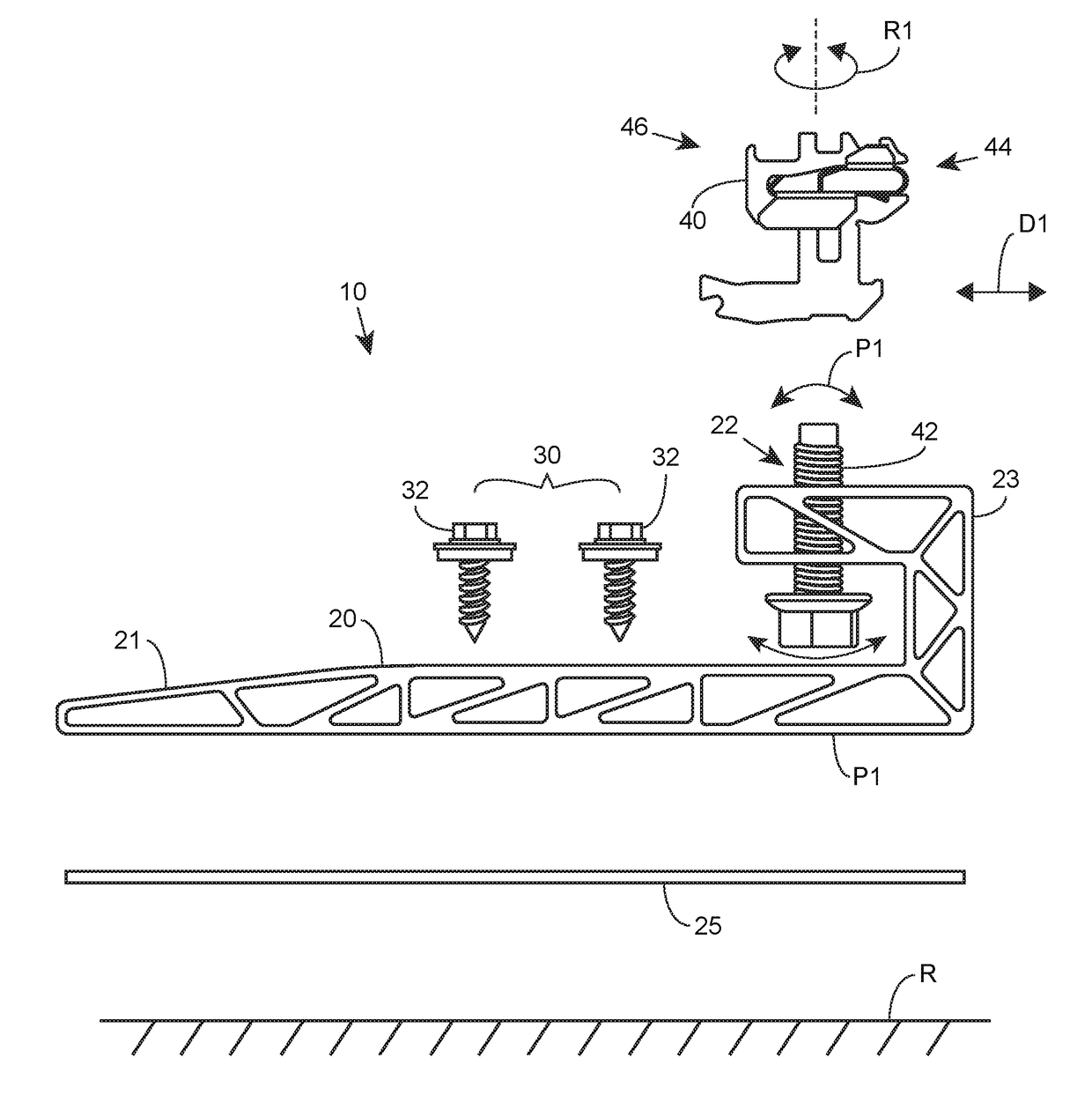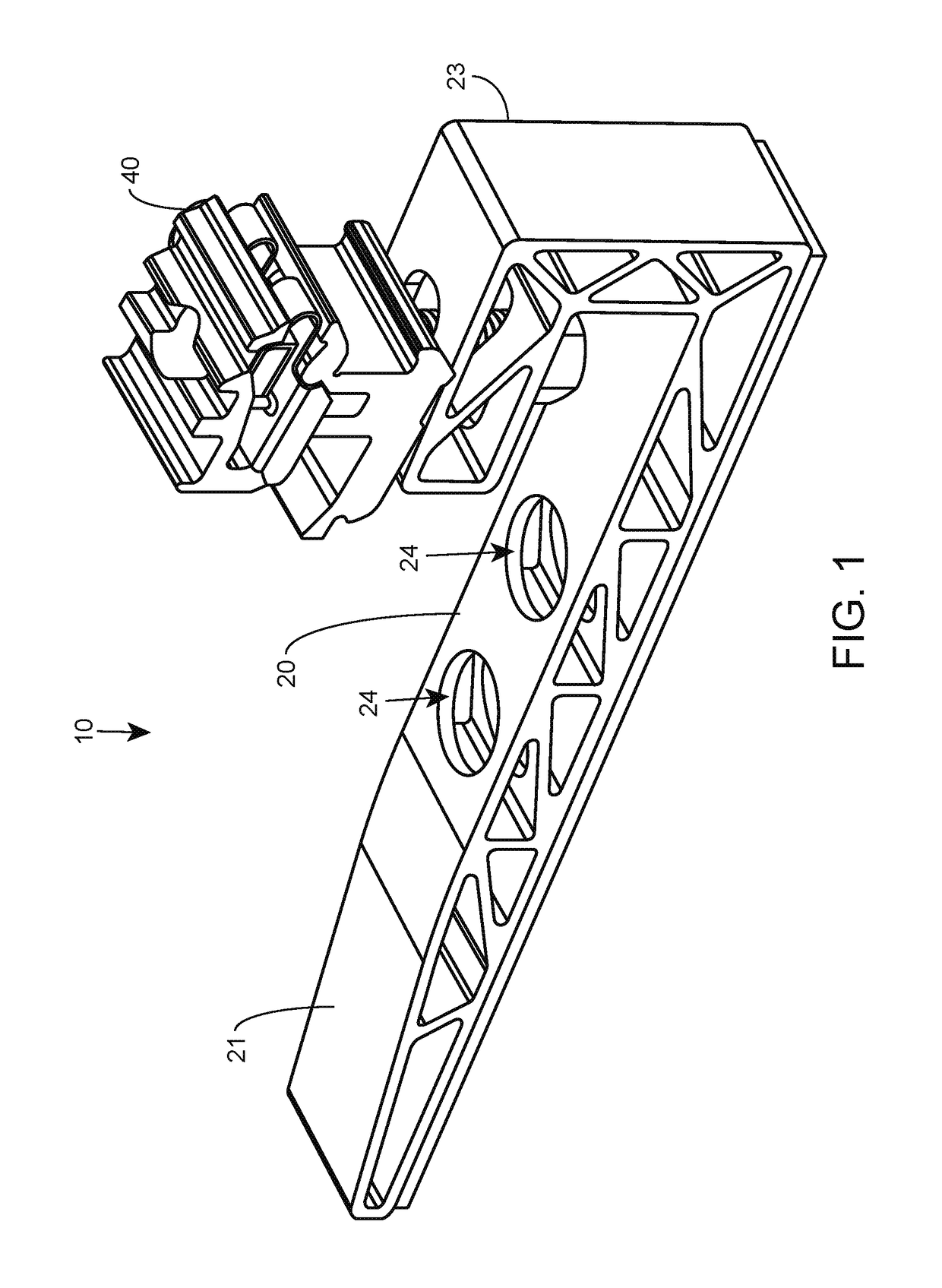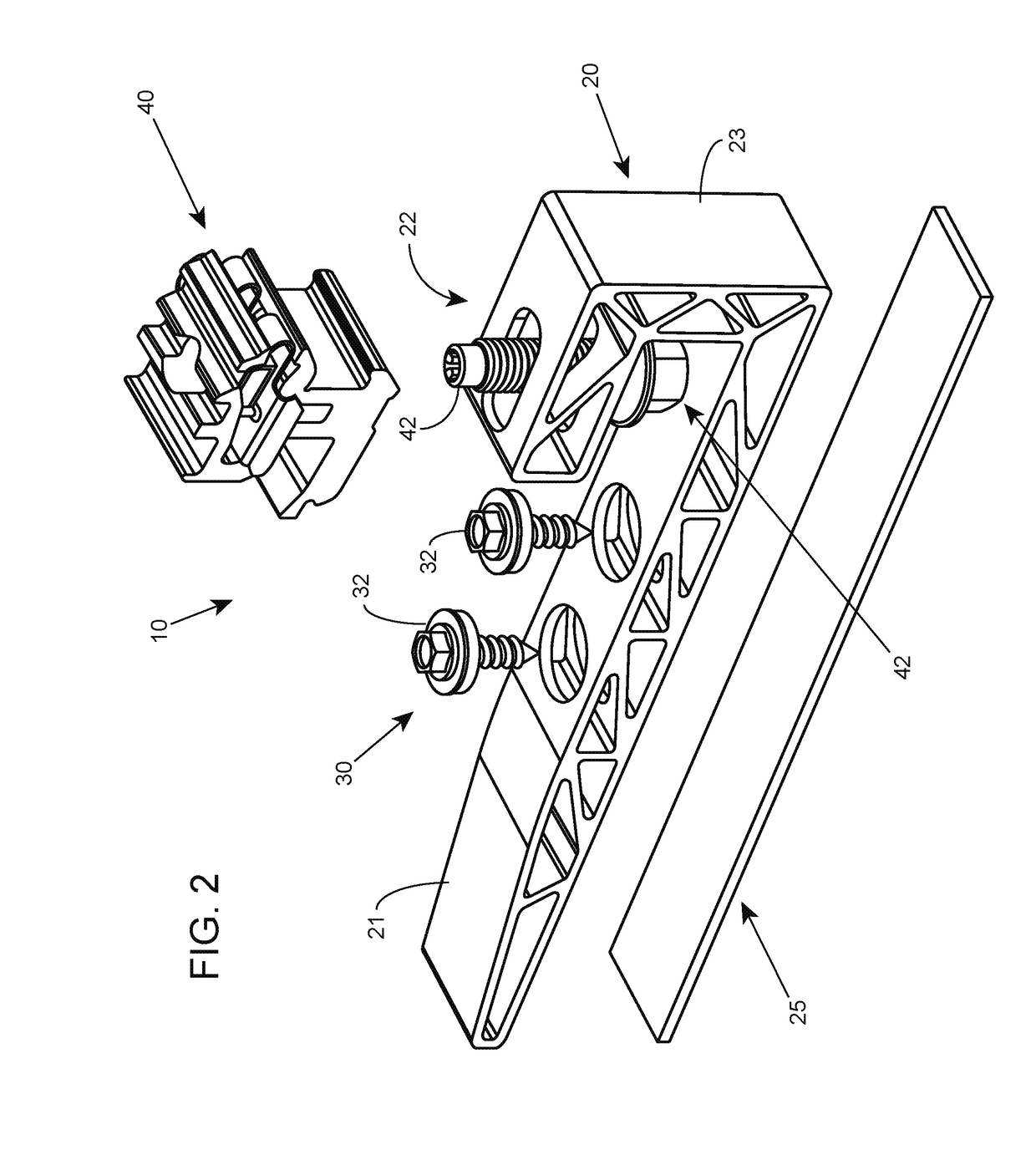Photovoltaic mounting system
a photovoltaic array and mounting system technology, applied in the direction of photovoltaic supports, heat collector mounting/supports, light and heating apparatus, etc., can solve the problems of inconvenient installation, inconvenient maintenance, and inability to meet the needs of users, and achieve the effect of convenient holding
- Summary
- Abstract
- Description
- Claims
- Application Information
AI Technical Summary
Benefits of technology
Problems solved by technology
Method used
Image
Examples
Embodiment Construction
[0034]The present system can provide a mounting assembly for simple installation of photovoltaic module arrays, and is well suited for (but not limited to) use with trapezoidal metal roofs. During installation, the present assembly can be manually snapped onto a first photovoltaic module by an installer holding one end of the module in the air while also holding the present assembly with their other hand. Next, the assembly can be placed on the roof like a kickstand for final adjustment to the desired location before being attached to the roof (while the assembly supports the first module thereon). Next, a second module can be attached onto the PV module connector portion of the assembly. In preferred embodiments, the attachment technique to the first PV module involves rotation of the PV module connector portion into a groove formed in a PV module frame, using the elongated base portion as a torque lever. The attachment technique of the second or subsequent module involves pivoting...
PUM
 Login to View More
Login to View More Abstract
Description
Claims
Application Information
 Login to View More
Login to View More - R&D
- Intellectual Property
- Life Sciences
- Materials
- Tech Scout
- Unparalleled Data Quality
- Higher Quality Content
- 60% Fewer Hallucinations
Browse by: Latest US Patents, China's latest patents, Technical Efficacy Thesaurus, Application Domain, Technology Topic, Popular Technical Reports.
© 2025 PatSnap. All rights reserved.Legal|Privacy policy|Modern Slavery Act Transparency Statement|Sitemap|About US| Contact US: help@patsnap.com



